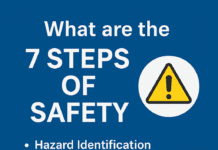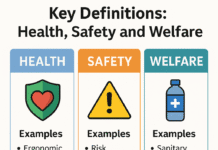
Difference between HSE and Safety
Difference between HSE and Safety : In the fast-paced and ever-evolving world, the terms “HSE” and “safety” are often used interchangeably, creating confusion among many. However, they represent distinct concepts with their own set of objectives and practices. In this article, we will delve into the significant differences between HSE and safety, shedding light on their definitions, regulatory frameworks, organizational responsibilities, implementation processes, benefits, and challenges. We will also explore the integration of these two crucial elements, offer case studies, and emphasize the significance of training and awareness.
Introduction
Defining HSE and Safety
HSE stands for Health, Safety, and Environment, while safety primarily focuses on the well-being and protection of individuals and property.
Importance of HSE and Safety
Both HSE and safety are essential for the well-being of employees and the sustainability of organizations.
Key Differences
Definition of HSE
HSE is a comprehensive approach that encompasses health, safety, and environmental aspects in its objectives and practices.
Definition of Safety
Safety, on the other hand, is specifically concerned with protecting people and assets from harm.
Objectives and Goals
HSE aims to create a holistic culture of well-being and sustainability, whereas safety’s primary goal is the prevention of accidents and incidents.
Scope of Application
HSE has a broader scope, including environmental impact, while safety is more narrowly focused on physical protection.
Regulatory Framework
HSE Regulations
HSE is subject to a wide range of environmental regulations, occupational health and safety laws, and sustainability guidelines.
Safety Regulations
Safety is mainly governed by regulations related to workplace safety, fire safety, and emergency response.
Organizational Responsibilities
Roles and Responsibilities in HSE
In HSE, organizations have designated roles for health, safety, and environmental managers, emphasizing a multidisciplinary approach.
Roles and Responsibilities in Safety
Safety typically involves safety officers, emergency response teams, and individuals responsible for physical security.
Implementation and Monitoring
HSE Implementation
Implementing HSE involves setting up robust safety management systems, environmental management systems, and promoting a culture of sustainability.
Safety Implementation
Safety implementation centers around measures like emergency drills, hazard identification, and ensuring compliance with safety protocols.
Monitoring and Evaluation
Both HSE and safety require ongoing monitoring and evaluation of processes and performance.
Benefits and Challenges
Benefits of HSE
HSE leads to reduced environmental impact, improved employee health, and long-term organizational sustainability.
Benefits of Safety
Safety measures result in fewer accidents, reduced property damage, and increased workplace morale.
Challenges in HSE
HSE often involves complex regulations and diverse aspects, making it challenging to manage.
Challenges in Safety
Safety can sometimes be seen as a burden, with a potential disconnect between regulations and daily operations.
Integration of HSE and Safety
Why Integrate HSE and Safety?
Integrating HSE and safety can enhance overall protection and sustainability, creating synergies between the two.
Best Practices for Integration
Implementing cross-functional teams, shared objectives, and coordinated training programs can lead to successful integration.
Training and Awareness
Importance of Training
Training programs are crucial in both HSE and safety, ensuring that all employees are aware of and can implement the necessary protocols.
Raising Awareness
Promoting awareness campaigns can be instrumental in creating a culture of safety and environmental responsibility.
Conclusion
In conclusion, while HSE and safety are distinct concepts, they are both indispensable for the well-being of employees and the success of organizations. Understanding their differences and the benefits they offer is essential for businesses to thrive in a complex and evolving world.
4 Pillars of Safety Management System (SMS)
5S Principles in the Workplace
Workplace Safety Toolbox Talk Meeting
FAQs
- Is safety and HSE the same thing? No, safety and HSE are not the same. While safety primarily focuses on protecting people and property, HSE encompasses health, safety, and environmental aspects.
- What are the key objectives of HSE? The key objectives of HSE are to promote employee health, ensure safety, and minimize environmental impact.
- Are there specific regulations for HSE and safety? Yes, there are specific regulations governing HSE and safety, each with its own set of guidelines and laws.
- Can HSE and safety be integrated in an organization? Yes, HSE and safety can be integrated to create a more comprehensive approach to protection and sustainability.
- What are the challenges in implementing HSE and safety measures? Challenges in implementing HSE and safety measures include regulatory complexity, resource allocation, and the need for ongoing training and awareness.
























